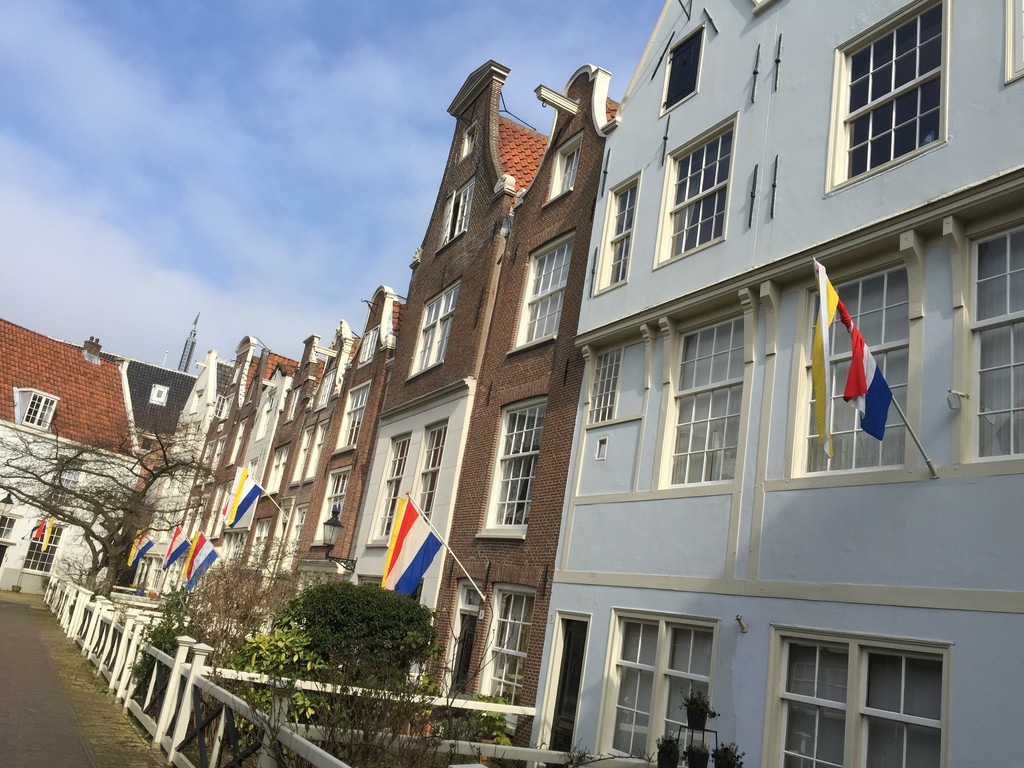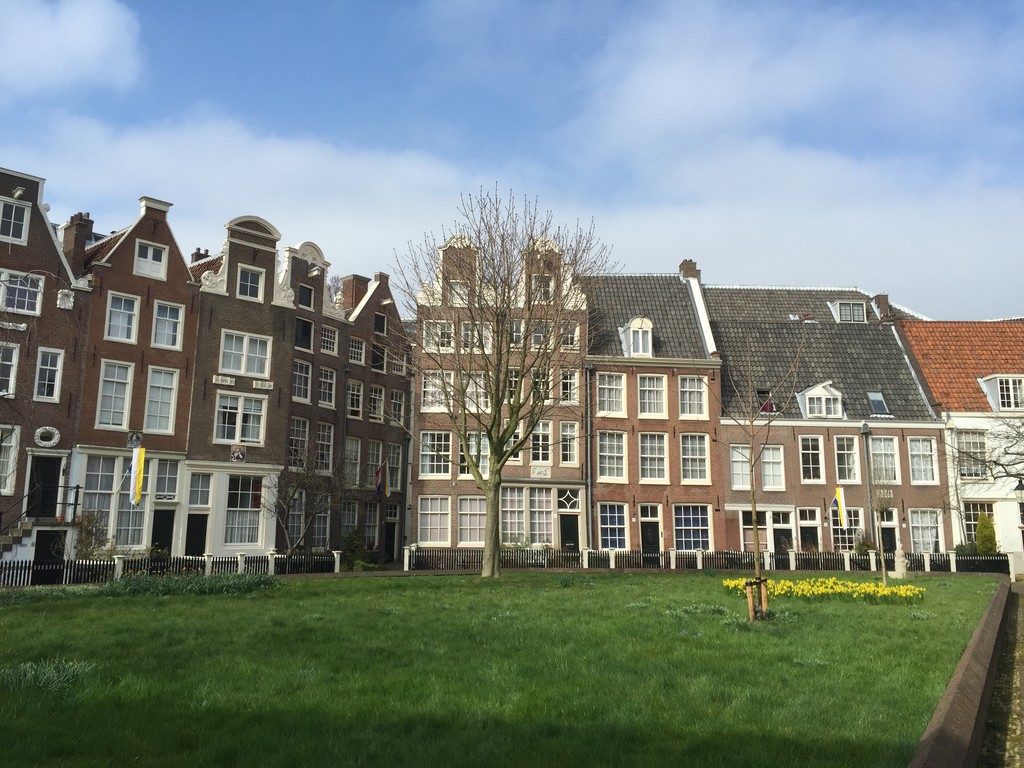Amsterdam Begijnhof
- Address: Begijnhof 30, Amsterdam, Países Bajos
- Tags:
 What to see Amsterdam,
Amsterdam,
Netherlands
What to see Amsterdam,
Amsterdam,
Netherlands
- Telephone: +31 20 622 19
- Website: www.begijnhofamsterdam.nl
The Amsterdam Begijnhof

The Amsterdam Begijnhof, as I mentioned in another entry, is one of the most famous beguinages in Holland and Belgium. It served as a home and a residence for women known as beguines until the twentieth century - to see my full description of exactly what a beguinage is, please read my entry about the Antwerp Beguinage.
In this case, the Amsterdam beguinage was built in the fourteenth century as a residence for Dutch Begijntes (Dutch translation of benguines), a Catholic order for single or widowed women who wished to live pious lives of godly service without having to become nuns. The benguines received free accommodation in return for caring for the sick and educating the poor of Amsterdam.
One resident, Cornelia Arens, adored the Begijnhof so much that she humbly asked to be interred beneath the pavement after her death, which occurred in 1654. Her grave can be found marked by the red granite stone on the footpath to the left side of De Engelse Kerk. The last beguine to live here died in the 1970s.

During the changes which occurred in 1578 as a result of the Reformation, the main church in the courtyard was confiscated from the Catholic beguines to be used by Protestants. The church was given to the Pilgrim Fathers during their brief stay in Amsterdam in 1607.
The beguines survived without a church for a century, but in 1671 construction began on their own Catholic chapel on the Begijnhof. This ´secret` chapel was in reality authorised by the Protestant authorities, though its exterior had to be hidden from public view.
The Begijnhof consists of small houses grouped around a well-kept courtyard. House number 34 is the oldest in Amsterdam, dating back to 1465, and one of the only two remaining wooden houses located in the city centre. The other wooden houses were destroyed by a series of fires, which led to a law being passed prohibiting their construction.
On the left hand side of the building, biblical plaques can be seen featuring extracts from the scriptures and illustrations. Authentic furniture from the Begijnhof can be seen in house number 38, which functions as a museum.
The small Engelse Kerk (the English church as it is known nowadays) has a courtyard dating from 1400, and belonged to the beguines until its confiscation by the Protestant authorities in 1578. Despite its name (which could simply refer to the language spoken there), it is now owned by the Scottish Presbyterians.

The Mirakel-Kapel or Begijnhof-Kapel, located at number 29 and 30 around the Engelse Kerk, was built by the Catholic architect Philips Vingboons in 1671. The beguines were always protectors of the Amsterdam Eucharist Miracle of 1345, the story of which is recounted in the stained glass windows of the church. The chapel of this church was dedicated to Saint Ursula and Saint John the Baptist in 1680. Its front facade is two Dutch houses, hiding the church from passers-by.

The story of the Amsterdam Eucharist Miracle
In 1345, a devout Catholic man became very ill. He told his family he would like to receive the Holy Viaticum. The family notified the pastor of the Old Church of the time. The priest, after administering the sacrament, advised the family that if the man were to vomit (which had been known to happen after eating when ill) they should burn the contents in the fireplace. The man was sick and the family did what they had been advised to do by the priest, throwing the contents into the fire in the sick man´s room. This incident occurred on March 12th.
The following morning, one of the women of the house went to rake the fire and realised that the Holy Sacrament was sat in the middle of the grid, unburned and in the receiving form it had been administered in the day before. A light surrounded it. The woman was distressed and immediately put her hand into the fire to rescue the sacrament. The fire seemed to have no affect on her, and she did not burn her hand. The woman was surprised to find that the Host was cold! She immediately called upon her neighbour and asked him to take the Sacred Host to his home. The neighbour took a clean cloth, picked up the Sacred Host and locked it in a box. He then took it to his home. When the husband of the woman found out what had happened, he asked to see the Sacrament. He tried to lift the white cloth, but the Sacred Particule resisted as if to say it did not wish to be touched by this man´s hands.
A priest was then called who took the Host and placed it into a large cup. When he left to wash the cloth which had held the Holy Sacrament, the large cup had been upset when he returned, and the Host had disappeared!
The next morning, the neighbour opened the original box and once again found the Sacred Host inside of it. It was apparent to all that Our Lord wanted this miracle to be known publicly. The priest notified the clergy of Amsterdam and a procession took place to bring the Host to the main church.
The sick man´s house was soon converted into a chapel and over 1, 000 public processions and pilgrimages were led to the place of the miracle.
On May 25th 1452, a great fire started which left two thirds of the city in ruins. It was during this time that the chapel known as the Holiest of Rooms fell victim to the flames. Incredibly, the Miraculous Host was preserved, having been brought to the chapel of the old church. In 1456, a new Holiest of Rooms was built next to a beautiful church.
Many pilgrims visited the shrine searching for cures and spiritual help. One pilgrim, the Archduke Maximilian and later Holy Roman Emperor, came to the shrine looking for a cure in 1480. God heard his prayers and he was cured. In an act of thanks, the Archduke installed an ornate window in the Holiest of Rooms.
In the second half of the sixteenth century, the Amsterdam Catholics began to be persecuted by the Protestants. The Holiest of Rooms was made the property of the Protestants. In 1910, instead of selling the property back to the Catholics, the chapel was demolished. However, a service of devotion to the Eucharistic Miracle still takes place every year on March 12th in the church nearest to the original site.
Photo gallery
Content available in other languages
- Español: Begijnhof de Amsterdam
- Italiano: Il Begijnhof di Amsterdam
Rate and comment about this place!
Do you know Amsterdam Begijnhof? Share your opinion about this place.


















